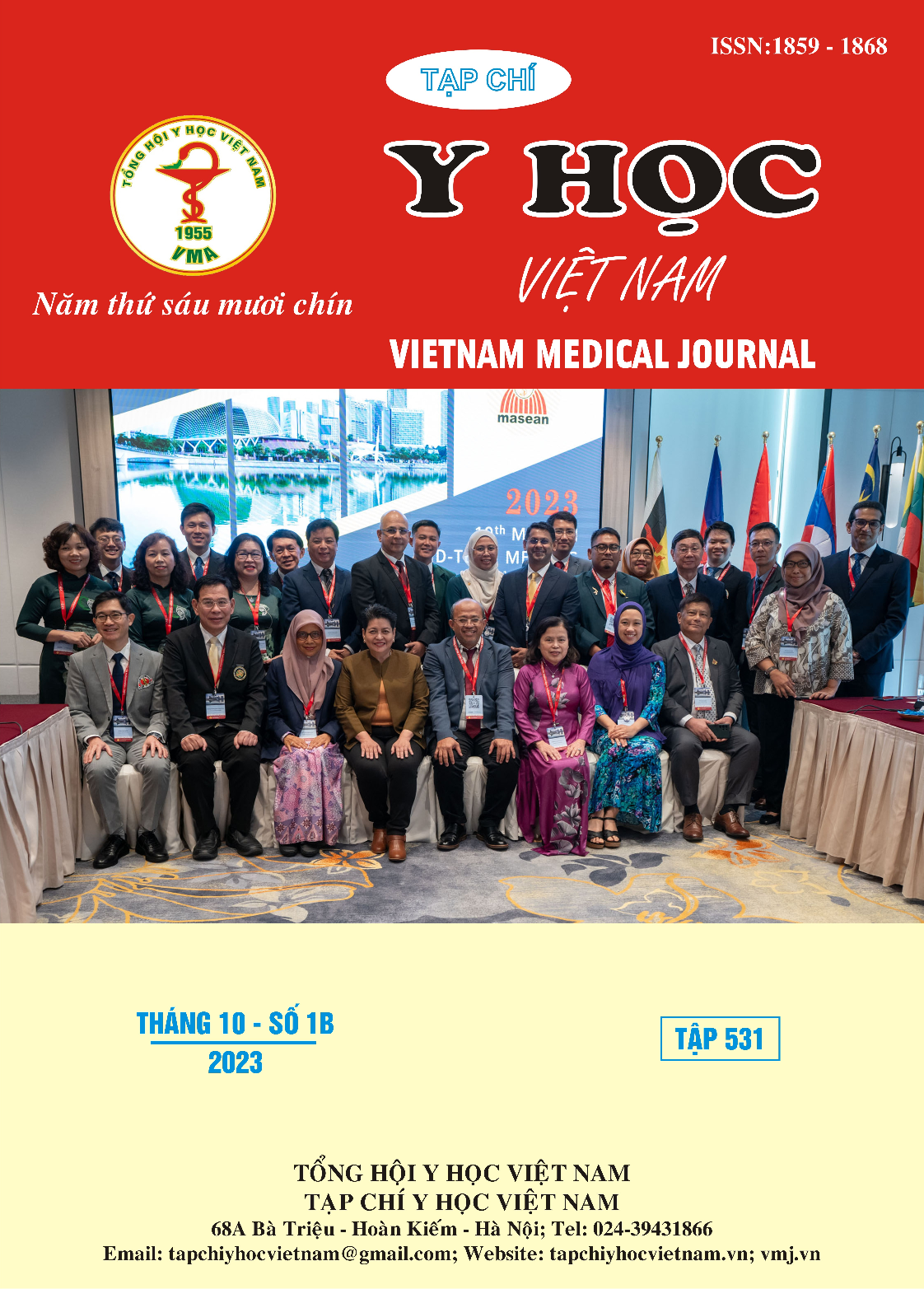POST-COVID-19 SITUATION AND RELATED FACTORS AMONG MILITARY PERSONNEL STATIONED IN CAN THO CITY, 2022
Main Article Content
Abstract
Introduction: The post-COVID-19 period is the phase following physical recovery from COVID-19 infection, during which individuals may continue to experience lingering symptoms and health issues. Among military personnel stationed in Can Tho City, the post-COVID-19 phase may encompass various factors that can impact their health and work performance. Objective: To assess the post-COVID-19 situation and related factors among military personnel stationed in Can Tho City in 2022. Materials and Methods: A cross-sectional descriptive study was conducted on a total of 756 military personnel infected with COVID-19 and stationed in Can Tho City in 2022. Data collection was carried out from August 2022 to January 2023. Results: The prevalence of post-COVID-19 among military personnel in the study was 22.8%. Individuals with underlying medical conditions accounted for 20.4% of the cases, with hypertension being the most prevalent (8.2%), followed by bronchitis and chronic obstructive pulmonary disease (3.7%) and diabetes mellitus (3.4%). Age and underlying medical conditions were found to be associated with post-COVID-19. The age group of 36-50 had a 2.04-fold higher odd of experiencing post-COVID-19 compared to the 19-35 age group (OR = 2.04, 95% CI: 1.40 – 2.98, p<0.001). The number of underlying medical conditions was positively correlated with the risk of post-COVID-19. The odds ratio for experiencing post-COVID-19 in the group with two or more underlying medical conditions compared to the group with no underlying conditions was 2.51 (95% CI: 1.18 - 5.23). Conclusion: The prevalence of post-COVID-19 among military personnel in the study was 22.8%. Factors associated with post-COVID-19 included the age group of 36 and above and having two or more underlying medical conditions. This underscores the importance of assessing and managing post-COVID-19 among military personnel, highlighting the need for attention and care in this population.
Article Details
Keywords
COVID-19, post-COVID-19, military personnel, Can Tho City
References
2. Huang C, et al. (2021). 6-month consequences of COVID-19 in patients discharged from hospital: a cohort study. Lancet. 397(10270):220-232. doi: 10.1016/S0140-6736(20)32656-8. Epub 2021 Jan 8. PMID: 33428867; PMCID: PMC7833295.
3. Davies, N.G., et al. (2020), Age-dependent effects in the transmission and control of COVID-19 epidemics. Nat Med, 1205–1211. https://doi.org/10.1038/s41591-020-0962-9.
4. Phạm Phương Mai (2023), Thực trạng tái nhiễm SARS-CoV-2 trong nhóm nhân viên y tế tại Bệnh viện đa khoa Bắc Ninh và Bệnh viện Hữu nghị đa khoa Nghệ An năm 2022-2023. Tạp chí nghiên cứu y học. 165(4) trang 240-253.
5. Bao L., Deng W., Gao H. (2020), Lack of reinfection in rhesus macaques infected with SARS-CoV-2. BioRxiv.
6. Van Elslande J., et al. (2020), Symptomatic SARS-CoV-2 reinfection by a phylogenetically distinct strain. Clin Infect Dis. doi: 10.1093/cid/ciaa1330. ciaa1330
7. Nguyễn Ngọc Tuyền (2023), Nghiên cứu tình hình mắc hậu COVID-19 và một số yếu tố liên quan trên người bệnh nhiễm COVID-19 tại huyện Long Hồ, tỉnh Vĩnh Long năm 2022-2023. Tạp chí Y Dược học Cần Thơ, số 61/2023, trang 211-219.
8. Akpek M. (2022), Does COVID-19 Cause Hypertension? Angiology. 2022;73(7):682-687. doi:10.1177/00033197211053903.


